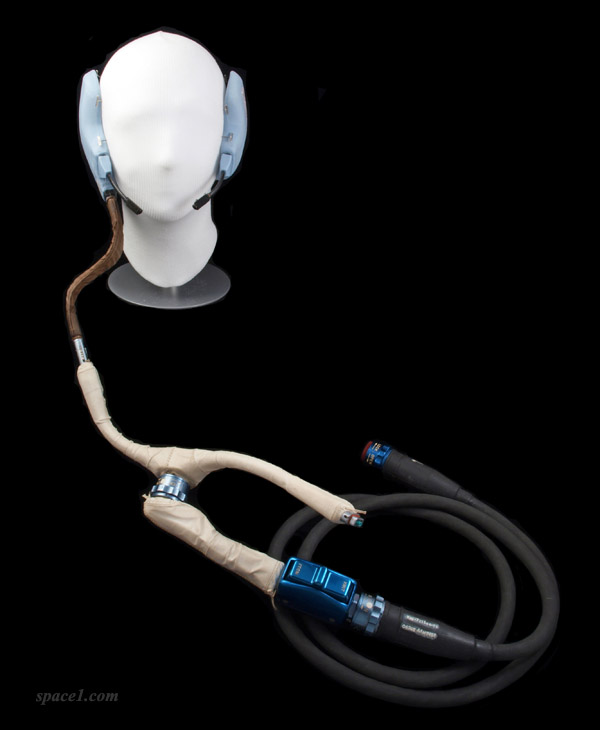 |
||||||||
|
|
||||||||
|
|
||||||||
|
On this page: Assembly Illustration Cutaway With headset Apollo 17 View |
|
|||||||||
 |
|
 |
|
|
Above, the Electrical Umbilical is shown integrated with a Communications Carrier Electronic Module (CCEM), the hardware portion of the headset. |
|
 |
|
|
Above, cutaway drawing of the control head. Note that a toggle switch is actuated by moving the rocker. |
|
 |
|
|
Apollo 17 astronauts Gene Cernan (left) and Ron Evans share a whimsical moment on their homeward journey. Cernan’s umbilical control head is at bottom. Note, however, that the black umbilical cable is labeled “C” for Center. This would have been Ron Evans’ cable. Apparently the astronauts shared the equipment as needed. (NASA photo). Also see details about Cernan’s flown headset. The control head artifact flew on Apollo 17 as -41, then was modified to -71 to support the Apollo-Soyuz mission as a flight-ready spare. The -71 revision changed the beta cloth cover to two layers, and added the part number tag on the cover. The serial number remained “AAJ3078.” Apollo missions flew with four control heads, one for each of the three crewmembers plus a spare. It is not known who may have used this artifact on the Apollo 17 mission. |
|





